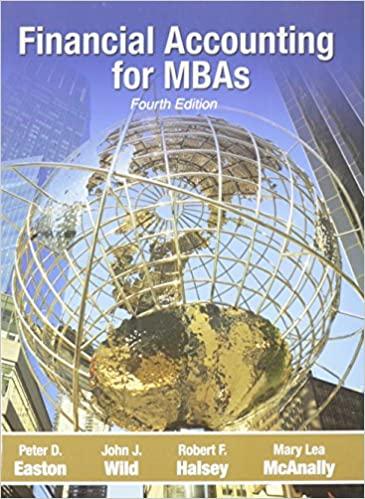Intel Corporation reported the following in its (200810-mathrm{K}) report. Share-Based Compensation Effective January 1, 2006, we adopted
Question:
Intel Corporation reported the following in its \(200810-\mathrm{K}\) report.
Share-Based Compensation Effective January 1, 2006, we adopted the provisions of SFAS No. 123(R) . . . Share-based compensation recognized in 2008 was \(\$ 851\) million ( \(\$ 952\) million in 2007 and \(\$ 1,375\) million in 2006). We use the Black-Scholes option pricing model to estimate the fair value of options granted under our equity incentive plans and rights to acquire common stock granted under our stock purchase plan. We based the weighted average estimated values of employee stock option grants and rights granted under the stock purchase plan, as well as the weighted average assumptions used in calculating these values, on estimates at the date of grant, as follows:

Additional information with respect to stock option activity is as follows:

\section*{Required}
a. What did Intel expense for share-based compensation for 2008? How many options did Intel grant in 2008? Compute the fair value of all options granted during 2008 . Why do the fair value of the option grants and the expense differ?
b. Intel used the Black-Scholes formula to estimate fair value of the options granted each year. How did the change in volatility from 2007 to 2008 affect share-based compensation in 2008? What about the change in risk-free rate?
c. How many options were exercised during 2008? Estimate the cash that Intel received from its employees when these options were exercised.
d. What was the intrinsic value per share of the options exercised in 2008? If employees who exercised options in 2008 immediately sold them, what "profit" did they make from the shares? (Hint: Assume that Intel grants options at-the-money.)
e. The tax benefit that Intel will receive on the options exercised is computed based on the intrinsic value of the options exercised. Estimate Intel's tax benefit from the 2008 option exercises assuming a tax rate of \(34.7 \%\).
f. What was the average exercise price of the options that expired in 2008? Explain why employees might have let these options expire without exercising them. (Hint: Assume that Intel grants options at-the-money.)
Step by Step Answer:

Financial Accounting For MBAs
ISBN: 9781934319345
4th Edition
Authors: Peter D. Easton, John J. Wild, Robert F. Halsey, Mary Lea McAnally





